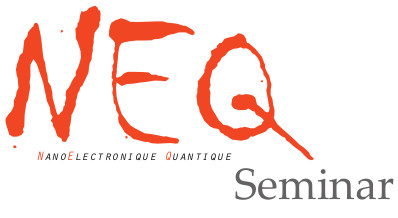- Accueil
- Institut Néel
- Équipes de recherche
- Pôles & Services techniques
- Travailler à l’institut
- Partenariats
- Actualités
- Agenda
- Annuaire

Zoom link : https://univ-grenoble-alpes-fr.zoom.us/j/91808901596?pwd=UWZ2cml2N1VBOEZBenk0d3RJek9rdz09
Resumé/Abstract: A singular Landau orbital magnetism of graphene, with a sharp narrow diamagnetic peak at the Dirac point, was already predicted in 1956 by McClure. It is now understood as a fundamental signature of the characteristic Berry phase of graphene’s electronic wave functions. Using a highly sensitive giant magnetoresistance (GMR) sensor, we have measured the gatevoltage–dependent magnetization of a single graphene layer. The signal exhibits a sharp diamagnetic peak at the Dirac point whose magnetic field and temperature dependences agree with long-standing theoretical predictions. These measurements enables the investigation of orbital currents in 2D materials that cannot be detected in usual transport measurements. Among the predictions an intriguing orbital paramagnetism at saddle points of 2D materials is expected. In order to reveal this unusual orbital paramagnetism, we investigated graphene layers encapsulated between two hexagonal boron nitride (hBN) crystals, with among them, one nearly aligned with the graphene lattice giving rise to a large period moiré potential acting on graphene charge carriers. Beside the sharp diamagnetic peak at the Dirac point, followed by de Haas-van Alphen oscillations at larger doping, we detect extra diamagnetic peaks at the satellite Dirac peaks of the moiré lattice. We also find paramagnetic peaks surrounding these satellite diamagnetic peaks related to van-Hove singularities in the density of states. These findings confirm the existence of paramagnetic orbital loops in 2D systems when the Fermi energy is tuned in the vicinity of saddle points.
Ref: J. Vallejo-Bustamante et al., Science 2021 (to be published).
